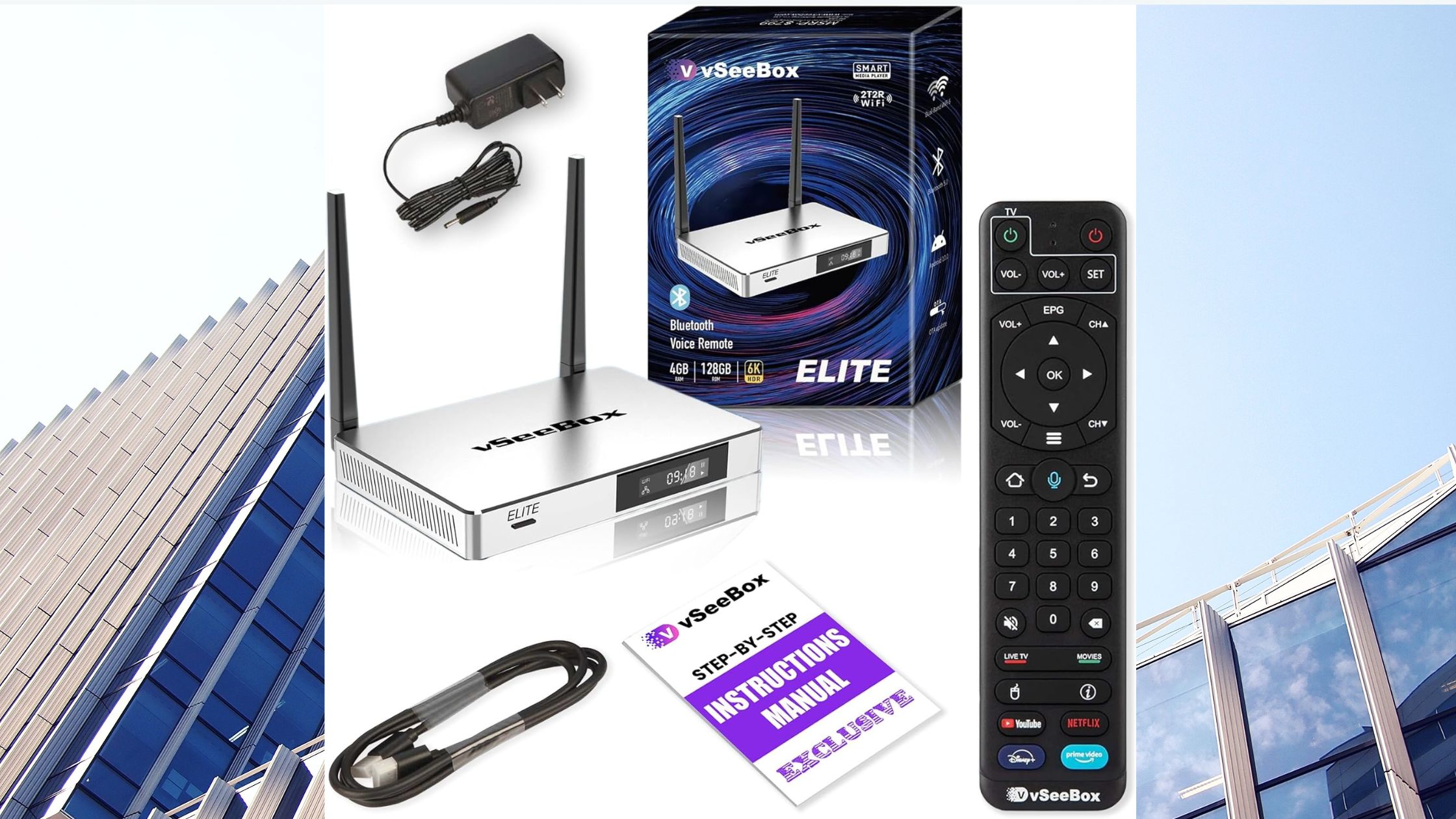What Happened to Fry’s Electronics? Rise, Fall & Closure
September 5, 2025 | by marketree


Introduction
Fry’s Electronics, a well-known retail chain specializing in consumer electronics, was established in 1985 in California. The company rapidly gained prominence in the consumer electronics market, becoming a go-to destination for tech enthusiasts and average shoppers alike. Its expansive stores offered a wide array of products, from computers and televisions to appliances and accessories, often accompanied by knowledgeable staff who fostered a unique shopping experience. The first Fry’s Electronics location was explicitly designed to provide an extensive selection of goods, reflecting the brand’s commitment to catering to diverse customer needs.
Throughout its history, Fry’s Electronics garnered a loyal customer base, owing to its vast selection, competitive pricing, and the incorporation of various warehouse-style stores. Over the years, the company expanded across multiple states, successfully establishing itself as a staple in the electronics retail industry. Moreover, Fry’s was one of the first retailers to embrace the growing demand for computer technology and gaming products, which helped solidify its significance in the sector. Its reputation was further bolstered by promotional events, reasonable return policies, and the establishment of private label offerings that appealed to budget-conscious consumers.
- ALL-IN-ONE COOKING: This isn’t just a toaster oven. It’s a french door air fryer toaster oven combo, blending 10 kitchen…
- DUAL-ZONE MASTERY: Our air fryer double door offers two temperature zones. Whether it’s your main dish or sides, customi…
- PERFECTLY SYNCED MEALS: Thanks to our toaster air fryer combination’s QuickSync Technology, match cooking times & settin…
However, as the digital age progressed, notable shifts in consumer buying behavior affected businesses like Fry’s Electronics. The rise of e-commerce and competition from online giants led to changes in the landscape of retail electronics. Consequently, challenges in maintaining physical stores and adapting to evolving trends exacerbated pressure on the company’s operations. Currently, as foreclosures and store closures have become part of the brand’s narrative, questions arise regarding the future of Fry’s Electronics. The discussion surrounding its current state invites a closer examination of the factors contributing to its decline while providing insight into whether it is still a viable player in the market.
A Brief History of Fry’s Electronics
Fry’s Electronics was founded in 1985 in Sunnyvale, California, by John Fry and his family. The inception of the store was driven by a desire to provide an extensive selection of consumer electronics and computer components. From its beginnings, Fry’s became known for its unique retail experience, characterized by a combination of large storefronts and an inventory that exceeded 50,000 products, ranging from computer hardware to household appliances. This vast selection allowed Fry’s to cater to various customer needs, making it a one-stop shop for tech enthusiasts and everyday consumers alike.
One innovative strategy that set Fry’s Electronics apart from competitors was its thematic store designs, often reflecting the history or culture of the region. These visually appealing setups attracted customers and provided an engaging shopping atmosphere. Furthermore, Fry’s adopted a no-frills approach to customer service, focusing more on product availability and competitive pricing than on high-pressure sales tactics. Their tagline, “The One-Stop Shop for All Your Electronics Needs,” exemplified this commitment to consumer choice and convenience.
Throughout the 1990s and early 2000s, Fry’s experienced exponential growth, expanding its presence beyond California to establish stores in states such as Texas, Arizona, and Nevada. The company also capitalized on the rise of technology and the internet, becoming a key player in the retail industry. Fry’s Electronics not only offered consumers the latest gadgets and components but also provided a platform for hobbies like home theater design and DIY computing projects, further broadening its appeal.
While the company found success with its distinct model, the retail landscape has changed dramatically in recent years. Advancements in e-commerce and shifts in consumer purchasing behavior ultimately presented new challenges to traditional electronics retailers. As we further explore Fry’s Electronics, understanding its colorful history is essential in assessing the current state of the business.
The Peak Years: When Fry’s Electronics Thrived
Fry’s Electronics experienced a remarkable ascent during its peak years, establishing itself as a leading player in the consumer electronics retail industry. Founded in 1985, the company initially catered to tech enthusiasts and hobbyists, quickly becoming a favorite destination for those seeking a vast selection of components, electronics, and gadgets. The store’s unique layout and themed designs differentiated it from traditional electronics retailers, creating an immersive shopping experience that captured customer interest.
As Fry’s Electronics expanded its footprint, it opened multiple locations across the United States, reaching a total of 34 stores at its zenith. Each store featured an extensive assortment of products that ranged from computers and home appliances to home entertainment systems. This significant product variety allowed Fry’s to attract a diverse customer base, including both professionals and casual tech users. Consequently, the company enjoyed sustained growth and increased market share, further establishing itself as the go-to destination for technology enthusiasts.
Fry’s commitment to customer satisfaction played a crucial role in its success. The company employed knowledgeable staff who were well-versed in the products available, providing valuable insights and recommendations to customers. This knowledgeable workforce not only facilitated informed purchasing decisions but also fostered a loyal customer base inclined to return for future purchases. As a result, Fry’s Electronics transformed into more than just a retail outlet; it became a community hub for tech lovers, often hosting events and workshops that engaged customers and encouraged interaction.
In summary, the peak years of Fry’s Electronics were characterized by strategic expansion, a diverse product offering, and a customer-centric approach. These elements collectively contributed to the company’s reputation and success, creating an environment where technology enthusiasts could explore the latest gadgets and innovations in the market.
Shifts in Consumer Behavior and Technology Trends
The landscape of consumer electronics has undergone significant changes in recent years, primarily driven by the evolution of technology and shifting consumer behaviors. One of the most impactful trends has been the dramatic move toward online shopping. Consumers increasingly prefer the convenience of e-commerce platforms, allowing them to browse a wider array of products from the comfort of their homes. This preference has presented substantial challenges for brick-and-mortar retailers like Fry’s Electronics, which historically thrived on physical store sales.
Moreover, the emergence of digital products has transformed what consumers expect from electronics retailers. With the rise of software solutions, streaming services, and smart devices, consumers are gravitating towards high-tech, digital lifestyles. Products that were once solely hardware-oriented are becoming increasingly interconnected, which necessitates a paradigm shift in how electronics retailers approach inventory and sales strategies. Fry’s Electronics, known for its expansive range of physical products, faced difficulty adapting to this trend as digital offerings became more prevalent.
In addition to these shifts, consumer preferences have reflected an increasing desire for personalized shopping experiences. Modern shoppers seek tailored recommendations and seamless interactions across different digital channels. As a result, retailers that fail to provide effective online platforms or personalization risk losing customer loyalty. With Fry’s Electronics traditionally focusing mainly on in-store experiences, this disconnect has likely influenced its declining sales performance.
The combination of these factors illustrates the ongoing struggle for Fry’s Electronics to maintain its relevance in a rapidly evolving market. As the company works to adapt to the changing technological landscape and consumer habits, its future hinges on how effectively it can integrate digital strategies alongside its established bricks-and-mortar presence.
Factors Leading to Decline
The decline of Fry’s Electronics can be attributed to several interrelated factors that significantly impacted its business model and market position. First and foremost, internal management challenges played a substantial role. The company’s structure was marked by a lack of clear strategic vision and leadership, which hindered its ability to make decisive adaptations in a rapidly changing retail landscape. This lack of direction ultimately led to operational inefficiencies and diminished employee morale, further exacerbating the company’s struggles.
In addition to internal issues, Fry’s Electronics faced fierce competition from online retailers such as Amazon, which provided consumers with unprecedented convenience and often lower prices. The shift toward e-commerce has revolutionized the retail industry; many traditional brick-and-mortar stores have struggled to maintain relevance. Fry’s Electronics, with its substantial inventory of electronics, failed to evolve its business strategy in response to this market shift. Instead of embracing a robust online presence and integrating digital sales channels, the company continued to rely on its physical stores, which diminished its competitiveness.
- 2 INDEPENDENT BASKETS: The XL air fryer with 2 independent baskets that lets you cook 2 foods, 2 ways, at the same time,…
- SMART FINISH & MATCH COOK: DualZone Technology allows you to choose between the Smart Finish feature, which unlocks cook…
- IQ BOOST: Optimally distributes power across each basket to cook a 6-lb. whole chicken and side as quickly as possible w…
Moreover, Fry’s Electronics was unable to adapt its business model to changing consumer preferences and technological advancements. As consumers increasingly turned towards online shopping and later, to omnichannel experiences, Fry’s lagged in updating its services and offerings. This failure not only alienated potential customers but also contributed to the perception that the brand was out of touch with the modern retail environment. As these internal and external pressures mounted, Fry’s Electronics found itself on a downward trajectory, leading to its ultimate decline as a household name in the electronics retail sector.
Is Fry’s Electronics Still in Business?
Fry’s Electronics, once a prominent retail chain known for its extensive selection of electronics and home appliances, has been a subject of speculation regarding its operational status. As of now, it is important to clarify that Fry’s Electronics has officially ceased operations. The company announced the closure of all of its stores in February 2021, effectively marking the end of an era for the business that had been a staple in electronic retailing since its establishment in 1985.
The decision to shut down was influenced by a combination of factors, including the rapid evolution of consumer shopping habits, increased competition from online retailers, and the challenging economic landscape exacerbated by the COVID-19 pandemic. Many Fry’s locations had been struggling in the years leading up to the closure, with decreasing foot traffic as consumers shifted to e-commerce for their shopping needs.
While online searches for Fry’s Electronics may still yield a variety of results, it is essential to note that the official website of the company is no longer operational. Before its closure, Fry’s had attempted to adapt to changing market conditions by expanding its online presence; however, these efforts were insufficient to stabilize the business. As of October 2023, any existing Fry’s Electronics stores have been removed, and customer service operations have ceased. The vacant stores stand as a reminder of the challenges faced by traditional brick-and-mortar retailers in an increasingly digital marketplace.
In light of this context, it is clear that Fry’s Electronics is no longer in business, leading to a sense of loss for its loyal customers who valued the store’s extensive range of electronic products, knowledgeable staff, and unique shopping experience. The closure serves as a reminder of the dynamic nature of the retail landscape, where adaptability and innovation are crucial for survival.
Who Bought Fry’s Electronics and What Changes Followed?
Fry’s Electronics, a leading electronics retail chain in the United States, has recently witnessed significant changes in ownership as it navigated various challenges. In 2021, reports surfaced indicating that the company was seeking to find a buyer due to its declining sales and increased financial difficulties. Following its filing for bankruptcy, the company entered negotiations with several potential buyers. Ultimately, a prominent investment firm acquired Fry’s Electronics, aiming to revitalize the brand and restore its reputation within the electronics retail market.
The new owners have indicated their intention to modernize the company, focusing on enhancing the customer experience both in-store and online. One of the primary changes discussed involves integrating cutting-edge technology into the shopping experience, including advanced inventory management systems and improved point-of-sale solutions. Moreover, plans to strengthen digital presence have been set in motion, with an emphasis on e-commerce capabilities to adapt to contemporary shopping trends. This shift reflects an acknowledgment of the significant impact that online retail has had on brick-and-mortar establishments.
Additionally, under the new ownership, Fry’s Electronics is expected to streamline its product offerings by prioritizing popular and high-demand categories, while also potentially reducing stock in less profitable segments. This strategic decision aims to enhance operational efficiency and address consumer preferences more effectively. Furthermore, there has been discussion about reopening select locations, which some believe might cater to the loyal customer base that grew accustomed to Fry’s distinctive shopping experience, characterized by a wide selection of electronics and knowledgeable staff.
In light of these changes, the future of Fry’s Electronics hinges on successfully navigating these transitions while restoring customer trust and engagement. How these strategic adaptations will ultimately affect the brand remains to be seen. However, the new ownership signals a renewed commitment to innovate and reclaim a prominent position in the competitive electronics retail landscape.
Lessons Learned from Fry’s Electronics’ Journey
The story of Fry’s Electronics serves as a compelling case study for retailers seeking to navigate the complexities of the ever-evolving market landscape. One of the most significant lessons derived from the rise and fall of Fry’s Electronics is the critical importance of adaptability. Retailing is inherently dynamic, influenced by shifting consumer preferences, technological advancements, and economic fluctuations. Fry’s initial success was largely due to its ability to seize opportunities in the consumer electronics sector. However, as the market gradually transformed, the retailer struggled to innovate and align its offerings with the changing demands of customers.
Another key takeaway is the necessity of embracing e-commerce. In an era where online shopping has become increasingly prevalent, Fry’s Electronics failed to establish a robust online presence early enough, missing out on a substantial portion of the market. Retailers must recognize the importance of integrating digital strategies into their business models, allowing them to reach a broader audience and provide consumers with flexible purchasing options.
Moreover, effective customer engagement and experience should not be underestimated. Fry’s Electronics built a reputation for offering a unique shopping experience; however, lapses in customer service and product availability contributed to its decline. Retailers should prioritize fostering strong relationships with their customers, ensuring that their needs are met and that they feel valued. This can enhance customer loyalty and drive repeat business.
Finally, the importance of financial prudence cannot be overlooked. Fry’s Electronics faced significant financial challenges in its later years, primarily due to ineffective inventory management and an unsustainable business model. Retailers must practice diligent financial planning and maintain a keen awareness of market trends to remain viable in an increasingly competitive environment. By internalizing these lessons from Fry’s Electronics’ journey, retailers can better position themselves for long-term success.
Future Outlook: Can Fry’s Electronics Make a Comeback?
As the retail landscape continues to evolve, the future of Fry’s Electronics hinges on its ability to adapt to changing consumer preferences and market dynamics. Historically, Fry’s has been synonymous with a diverse range of electronics, providing an extensive product catalog and a unique shopping experience. However, the increasing reliance on online platforms and the shift in consumer behavior toward e-commerce pose significant challenges to brick-and-mortar retailers like Fry’s.
Despite these hurdles, there remains a potential pathway for revival. For instance, the brand could capitalize on emerging trends in consumer electronics, such as sustainable technology, smart home devices, and gaming hardware. By aligning its offerings with current market demands and investing in targeted marketing strategies, Fry’s Electronics could attract a new generation of tech enthusiasts. Additionally, embracing a hybrid business model that combines online sales with revitalized in-store experiences may enhance customer engagement and drive sales.
Moreover, Fry’s could expand its niche in specialized markets, focusing on providing hands-on demonstrations and expert guidance that online competitors cannot replicate. This could be particularly valuable in segments like home automation and consumer audio, where informed purchasing decisions are critical. Collaborations with tech brands for exclusive products or promotions might also bolster Fry’s appeal in an increasingly competitive arena.
Ultimately, the potential for Fry’s Electronics to make a comeback will rely on its willingness to innovate and evolve in response to contemporary shopping habits. By focusing on customer experience and integrating new technologies, Fry’s could redefine its market position and regain relevance in the electronics retail landscape. The journey toward resurgence will require strategic foresight, but opportunities for reimagination certainly exist as companies adapt to a digitally-driven world.
- Versatile countertop cooking: Air fry, bake, dehydrate, rotisserie, or roast to crispy perfection in one convenient appl…
- Cook faster: No need to preheat like traditional ovens. This all-in-one convection oven uses rapid air heating elements …
- Healthy cooking made easy: Make healthy meals using 98% less oil than traditional fryers
RELATED POSTS
View all





